How to Store and Preserve Fresh Herbs
- March 28, 2024
- 0 comment
This guide on How to Store and Preserve Fresh Herbs outlines effective methods to maintain flavor and aroma, covering drying, freezing, and innovative techniques suitable for cooks and chefs. This guide covers everything from classic methods like drying and freezing to innovative techniques, helping you maintain the freshness and taste of your herbs, whether you’re cooking at home or in a professional kitchen.
List on How to Store and Preserve Fresh Herbs
- Immediate Care
- Refrigeration Techniques
- Freezing for Longevity
- Drying for Extended Shelf Life
- The Role of Preservation Oils
- Avoiding Common Mistakes
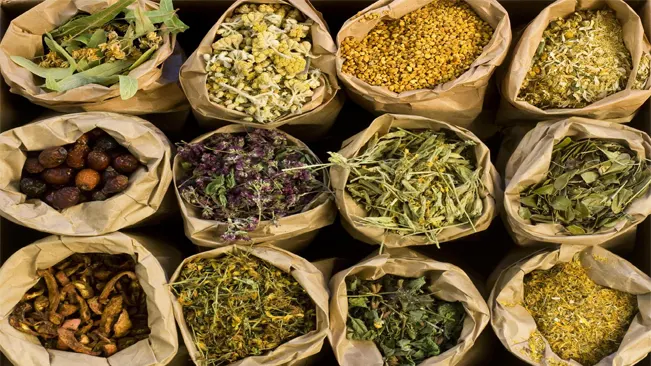
Immediate Care
Upon bringing fresh herbs home, give them immediate attention. Trim the stems and remove any wilted or brown leaves. This pre-storage preparation plays a critical role in extending their lifespan.
Trimming the Stems
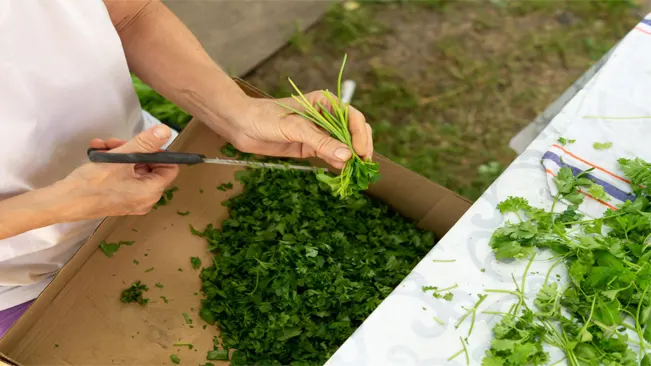
- Just like flowers, fresh herbs have stems that can continue to absorb water even after being cut. Trimming the stems ensures that the herbs can better uptake water, which keeps them hydrated and fresh. It’s recommended to trim about an inch off the bottom of the stems.
Removing Damaged Leaves

- Wilted or brown leaves can harbor bacteria and fungi, which can spread to healthy parts of the herb. By removing these damaged leaves, you not only improve the overall appearance but also prevent potential decay from affecting the remaining healthy leaves.
Immediate Hydration
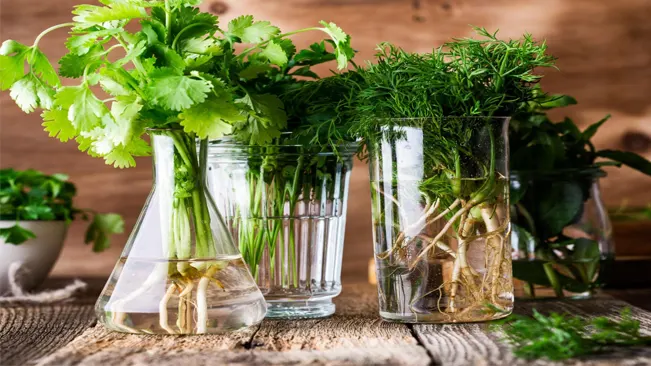
- After trimming, some herbs benefit from being placed in a jar of water to rehydrate. This is especially beneficial for herbs like basil, mint, and cilantro. It’s akin to putting fresh cut flowers in water – it extends their life and keeps them perky.
Proper Storage Preparation

- For herbs that don’t fare well in water, like parsley or dill, wrapping them in a damp paper towel before placing them in a bag can maintain the right humidity level around the herbs. This prevents them from drying out in the fridge.
Refrigeration Techniques
Most herbs like parsley, cilantro, and basil thrive in cooler temperatures.
Moisture Control Method
- This method is particularly effective for herbs like parsley, cilantro, and even dill. The key is to maintain the right balance of humidity around the herbs. By wrapping them in a damp paper towel, you create a moist environment that keeps these herbs fresh without being overly wet. The towel provides just enough moisture to keep the herbs from drying out. Once wrapped, placing them in a resealable bag helps to retain the moisture level and protects the herbs from the varying temperatures and conditions of the fridge. This method can extend the life of these herbs for several weeks if monitored and the damp towel is changed as needed.
Jar Method
- This approach is ideal for herbs like basil, which are sensitive to cold temperatures and can suffer from cold burn if stored improperly in the fridge. By treating basil like a bouquet of flowers, you replicate its natural growing conditions. Placing the stems in a jar with water allows the herbs to continue absorbing moisture, much like they would if they were still growing. Covering them loosely with a plastic bag helps to create a mini greenhouse effect, maintaining a stable environment. This method not only keeps the basil fresh but can also encourage some continued growth. Regularly changing the water in the jar is crucial to prevent the growth of bacteria and mold.
Freezing for Longevity
Freezing herbs is a fantastic way to preserve their freshness and flavor for a long period, often extending their usability for several months. This method is particularly suitable for many robust and tender herbs, including basil, chives, dill, mint, parsley, and cilantro. Freezing helps to retain the essential oils in the herbs, which are responsible for their aroma and flavor.
Ice Cube Tray Method Explained
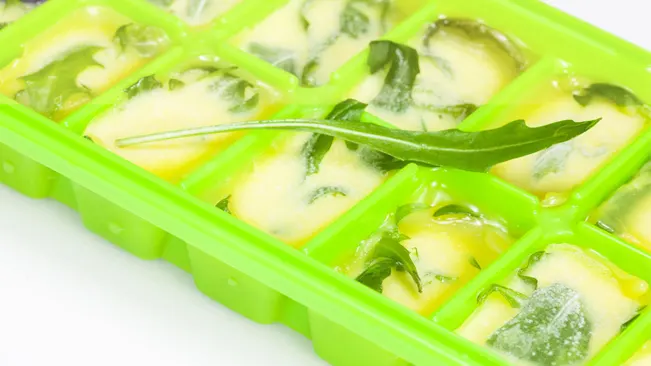
- Chopping: Finely chopping the herbs before freezing helps to release their flavors and makes them more convenient to use straight from the freezer.
- Using Water or Olive Oil: Filling the tray with water is great for herbs used in soups and stews, as the melting cube will directly integrate into the liquid. Olive oil, on the other hand, is ideal for herbs used in sautéing or roasting. As the oil melts, it releases the herb flavors into the dish.
- Usage: These cubes can be directly added to the pot while cooking. One cube typically equates to about a tablespoon of fresh herbs.
Freezer Bag Method Detailed
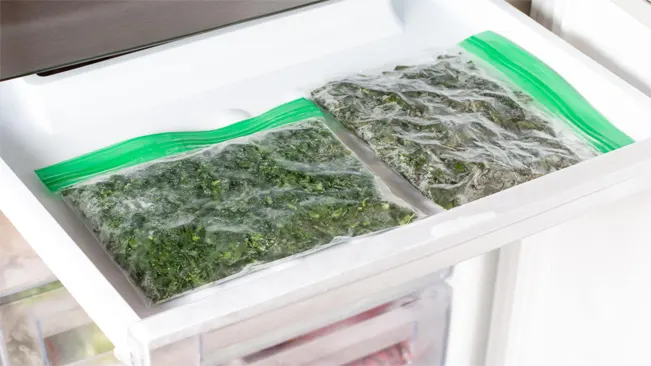
- Pre-freezing: Spreading the herbs flat on a baking sheet to freeze initially prevents them from sticking together. This is crucial for maintaining the integrity of the herbs and makes it easier to grab just the amount you need later.
- Storage: After they are frozen solid on the baking sheet, transferring them to a freezer bag keeps them protected from freezer burn and other odors in the freezer.
- Thawing: These herbs don’t need to be thawed before use. You can crumble the frozen herbs directly into your cooking pot, as they will thaw almost instantly when exposed to heat.
Additional Tips
- Labeling: Always label your freezer bags with the herb type and the date of freezing. This helps in keeping track of their freshness period.
- Avoiding Moisture: Ensure the herbs are dry before freezing to prevent ice crystal formation, which can deteriorate the quality and texture of the herbs.
Drying for Extended Shelf Life
Drying suits herbs like oregano, thyme, and rosemary. Hang bunches of herbs upside down in a warm, airy space away from direct sunlight. Once dry, store them in airtight containers in a dark, cool place. Dried herbs can last for several months.
Choosing the Right Herbs for Drying
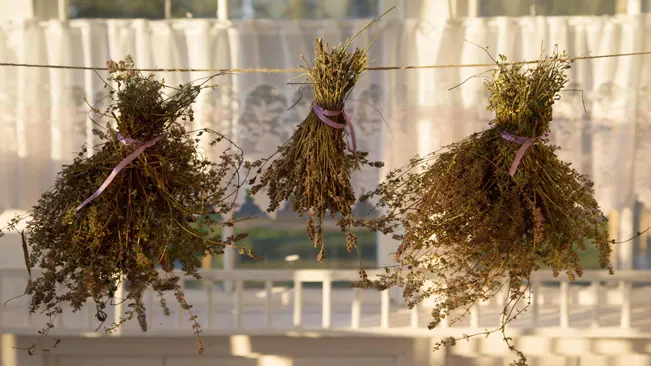
- Drying works best with herbs that have a lower moisture content, such as oregano, thyme, rosemary, sage, and bay leaves. These herbs retain their flavor well when dried, unlike more tender herbs like basil, parsley, or cilantro, which can lose much of their flavor.
Preparing Herbs for Drying

- Before drying, rinse the herbs in cool water and pat them dry to remove any dirt or insects. Remove any damaged or diseased leaves. This step is crucial for ensuring the quality of the dried herbs.
Air-Drying Process

- The traditional method of air-drying involves tying the herbs into small bundles and hanging them upside down in a warm, well-ventilated area out of direct sunlight. This helps to maintain their color and essential oils, which are responsible for their flavor and aroma. The drying process can take anywhere from several days to a couple of weeks, depending on the herb and environmental conditions.
Alternative Drying Methods
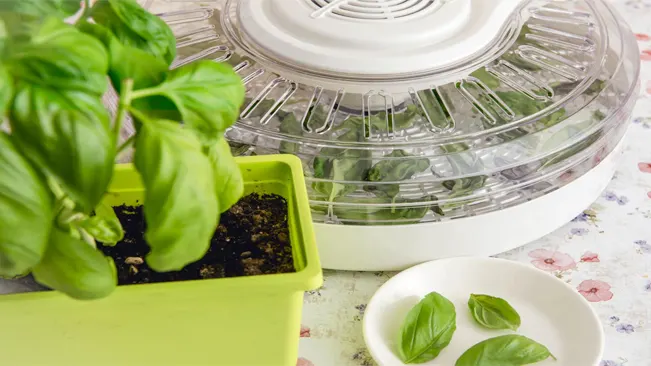
- If you’re in a more humid environment or need a quicker method, you can use a food dehydrator or an oven set to the lowest temperature. However, these methods require careful monitoring to prevent the herbs from burning or losing their potent oils.
Storing Dried Herbs
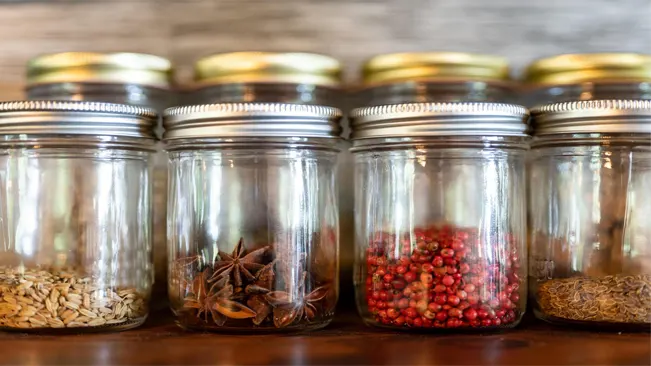
- Once the herbs are completely dry (they should crumble easily), store them in airtight containers away from light and heat. Whole leaves retain their flavor longer than crushed or ground herbs, so it’s best to store them whole and crush them as needed.
Usage and Shelf Life
- Dried herbs are more potent than fresh ones, so you’ll need to use less of them in cooking (a general rule is one-third the amount of dried herb as fresh). Properly stored, dried herbs can maintain their flavor for up to a year, though they are best used within six months for optimal taste.
The Role of Preservation Oils
Herbs can be preserved in oils, which is an excellent method for herbs like rosemary, thyme, and sage. Submerge the herbs in a high-quality oil, like olive or avocado, and store in the refrigerator. This not only preserves the herbs but also creates flavorful oils for cooking.
- Flavor Infusion: When herbs are submerged in oil, their essential oils slowly infuse into the surrounding liquid. This creates a richly flavored oil that carries the essence of the herbs, which can be a fantastic addition to dressings, marinades, or even as a finishing oil for dishes.
- Longevity: Oil acts as a barrier to oxygen and light, which are two main factors that cause herbs to degrade. By submerging the herbs in oil and storing the mixture in the refrigerator, you significantly extend their usable life. This is especially useful for herbs that might otherwise wilt or dry out quickly.
- Choice of Oil: The type of oil used can also contribute to the flavor profile. Olive oil, with its own distinct taste, complements the Mediterranean herbs like rosemary and thyme well. Avocado oil, being milder, can be a good choice for not overpowering more delicate herbs.
- Safety Considerations: It’s important to note that when preserving herbs in oil, particularly when storing them at room temperature, there is a risk of botulism, a rare but potentially dangerous foodborne illness. To minimize this risk, it’s advisable to store the herb-infused oil in the refrigerator and use it within a week or two. For longer storage, freezing the oil is a safer option.
- Culinary Uses: These infused oils can elevate simple dishes with complex flavors. For example, rosemary-infused olive oil can be drizzled over roasted vegetables, or sage-infused oil can be used to add depth to a butternut squash soup.
Avoiding Common Mistakes
Avoid washing herbs before storing unless they’re visibly dirty. Excess moisture can expedite decay. Additionally, avoid overcrowding in storage, as this can lead to reduced air circulation and faster spoilage.
Washing Herbs
- It’s a common misconception that all herbs should be washed before storage. However, introducing moisture to herbs can actually be detrimental, speeding up the decay process. Herbs like parsley, cilantro, or basil, which are often used fresh, are particularly susceptible to moisture-induced wilting and rotting. If the herbs are clean, it’s best to store them as is and only wash them right before use. If they are visibly dirty, gently rinse them, and ensure they are thoroughly dried before storage.
Proper Drying Technique
- If washing is necessary, it’s crucial to dry the herbs completely. A salad spinner can be effective for this purpose, followed by laying them out on a clean kitchen towel or paper towel to absorb any remaining moisture. This step is vital to prevent mold growth and prolong the lifespan of the herbs.
Storage Density
- Overcrowding herbs in a storage container can restrict air circulation, creating a humid environment that’s conducive to mold and bacterial growth. It’s essential to give herbs enough space to breathe. If using a container or plastic bag, don’t stuff it full. This allows air to circulate around the herbs, keeping them dry and delaying spoilage.
Temperature Considerations
- While most herbs benefit from being stored in a cool environment, such as a refrigerator, some herbs like basil are sensitive to cold temperatures and may wilt or darken if refrigerated. Understanding the specific needs of each herb type is important for optimal storage.
Regular Check-ups
- Finally, regular monitoring of stored herbs is key. Remove any leaves or stems that show signs of decay to prevent them from spreading to the rest of the bunch. This routine check-up ensures that you can enjoy fresh herbs for a longer period.
Conclusion
With these methods, you can effectively extend the life of your fresh herbs, ensuring a continuous supply of vibrant flavors for your culinary creations. By understanding and utilizing these storage and preservation techniques, your kitchen will always be stocked with the fresh zest of nature’s best seasonings.
FAQs (Frequently Asked Questions)
- What’s the best way to store herbs like parsley and cilantro?
Wrap them in a damp paper towel and place them in a resealable bag in the refrigerator. - Can I freeze fresh herbs?
Yes, you can freeze herbs by chopping them and placing them in ice cube trays with water or oil, or freeze them flat on a baking sheet and then transfer to a freezer bag. - How long can I keep dried herbs?
Properly dried herbs can last up to a year when stored in a cool, dark place in airtight containers. - What’s the difference between drying and freezing herbs?
Drying intensifies the flavor and is great for long-term storage, while freezing preserves the fresh taste and is suitable for short to medium-term storage. - How do I dry fresh herbs at home?
Hang them in bunches in a warm, airy place away from direct sunlight, or use a low-temperature oven or food dehydrator. - Should I wash herbs before storing them?
Only wash herbs if they’re visibly dirty. Excess moisture can lead to decay, so it’s generally best to wash them right before use. - Can I store basil in the fridge?
Basil is best stored at room temperature in a jar of water, like cut flowers. Refrigeration can cause it to wilt and lose flavor. - How can I tell if my stored herbs have gone bad?
Look for signs of wilting, discoloration, or a musty smell. These are indicators that the herbs are past their prime. - Can I store different herbs together?
It’s generally fine, but some herbs like cilantro and parsley require moisture, while others like rosemary and thyme prefer drier conditions. - Are there any herbs that shouldn’t be frozen?
Delicate herbs like chives can become mushy when frozen and are better used fresh or dried.

Kristine Moore
Forestry AuthorI'm Kristine Moore, a seasoned garden landscaping professional with over 30 years of experience. My extensive career has been dedicated to transforming outdoor spaces into stunning, sustainable landscapes. With a deep understanding of horticulture, design principles, and environmental stewardship, I have become a respected figure in the field, known for creating harmonious, visually appealing, and eco-friendly gardens. My commitment to excellence and continuous learning in landscaping trends and techniques has solidified my reputation as an expert in garden design and implementation.







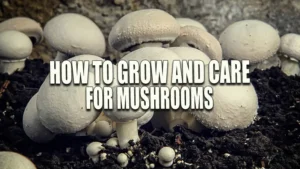





Leave your comment